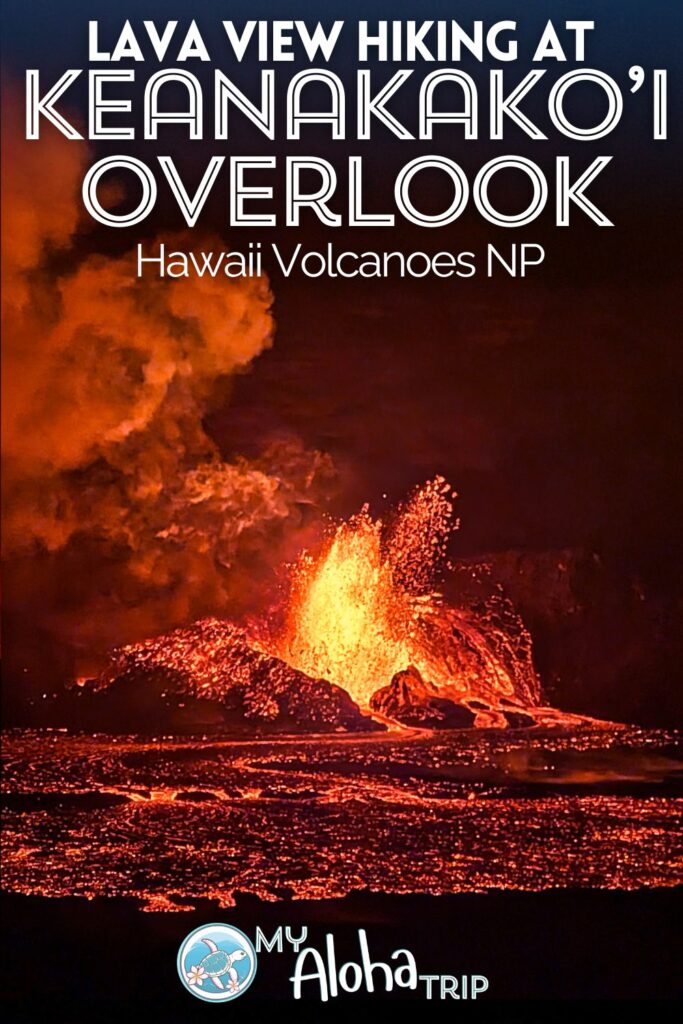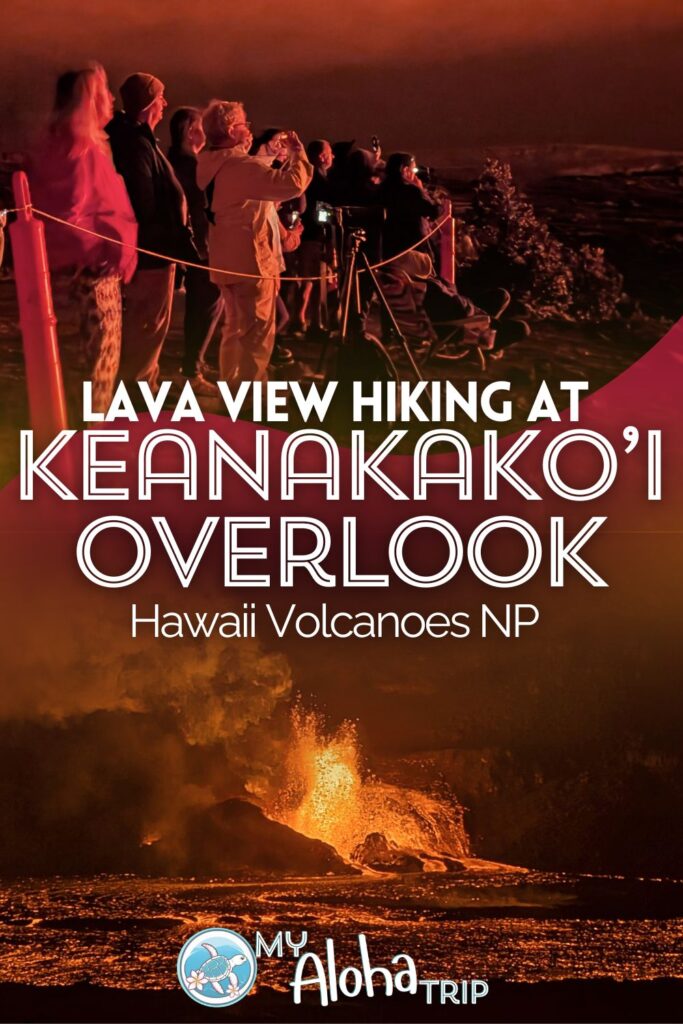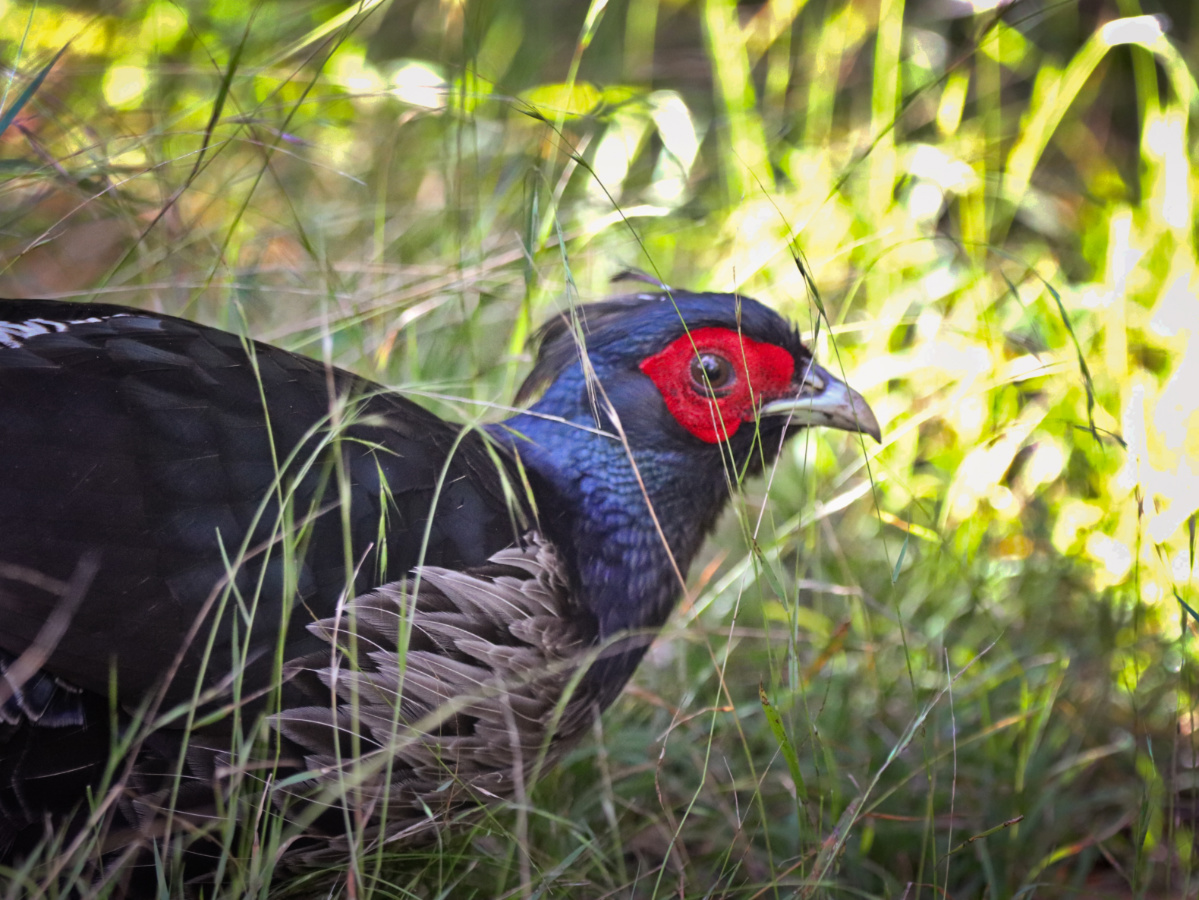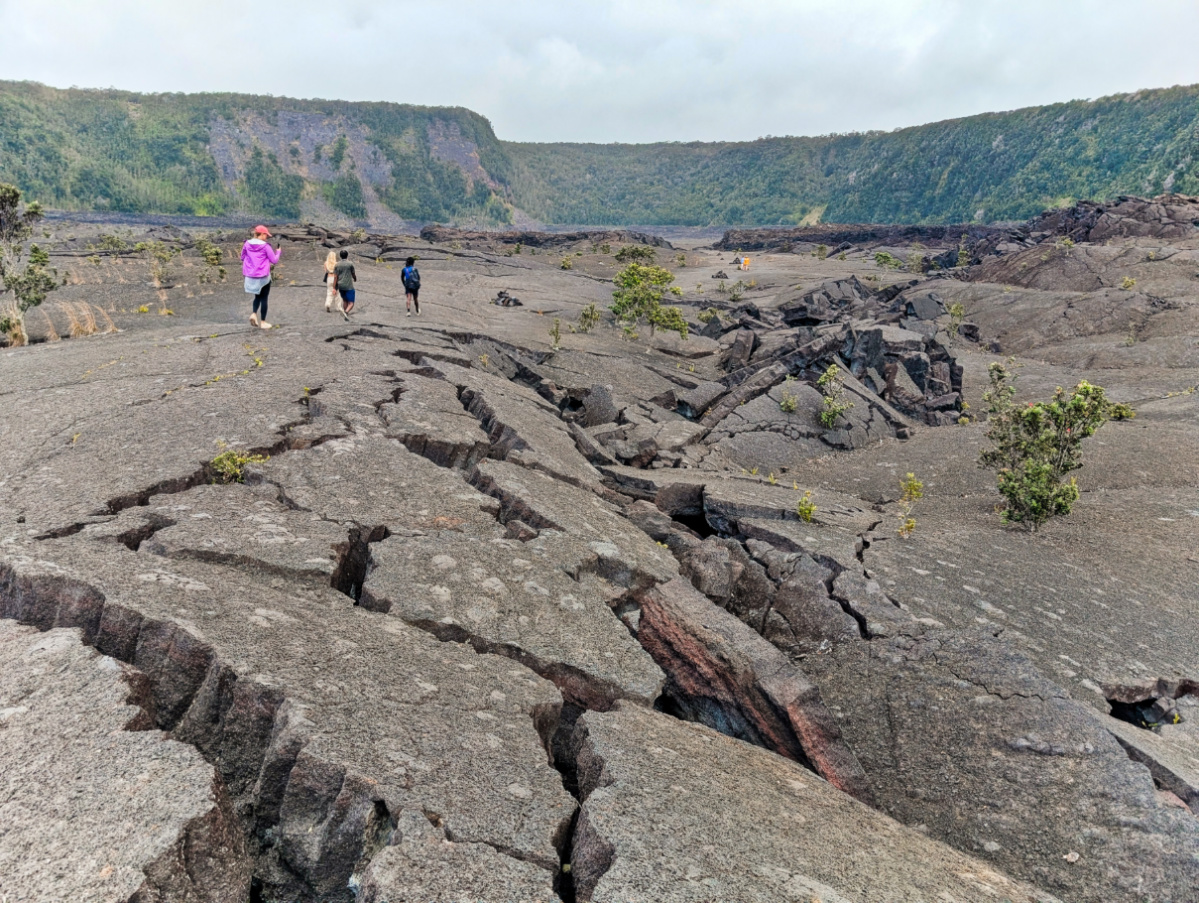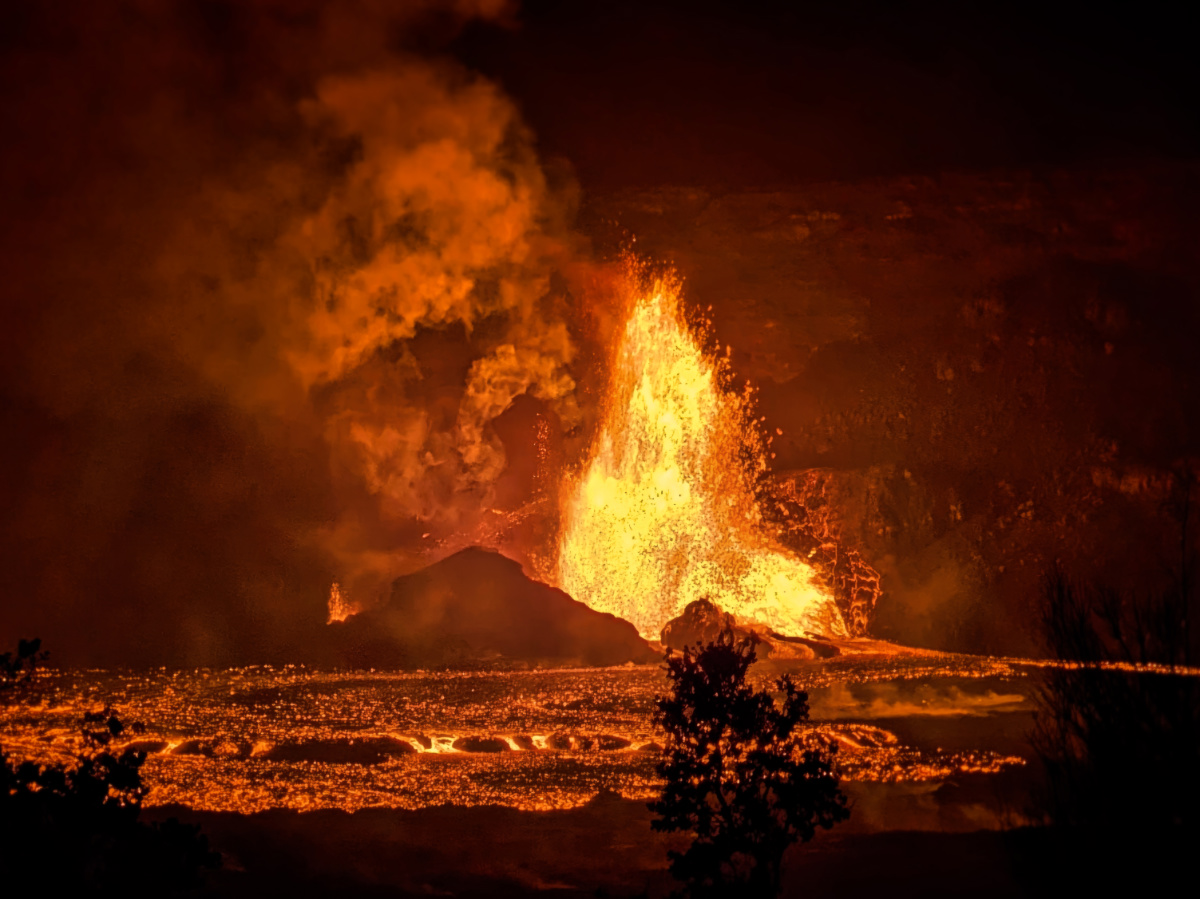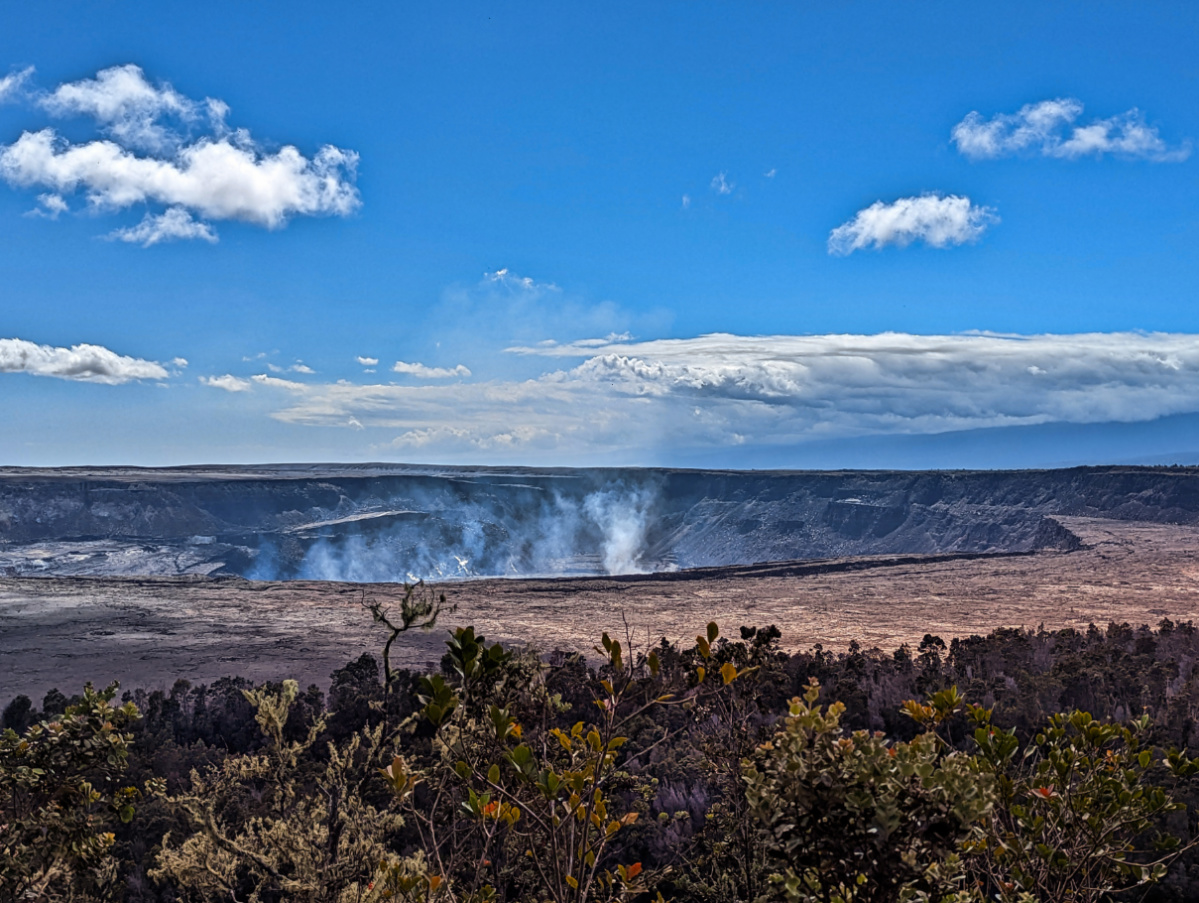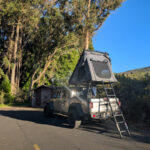If you’re so lucky as to visit Hawaii Volcanoes National Park while there is an eruption going on, you’re going to want to do the Keanakako’i Overlook Trail to get the best view of the lava. The Halemaumau Crater is the source of most of Kilauea’s eruptions so being able to get a good, clear view of all the action is an epic activity. When you’re on the Big Island of Hawai’i and you’re in lava mode, keep in mind that the best active lava viewing experiences happen at night, whether it’s just enjoying lava glow or seeing an astounding fountain, and the Keanakako’i Overlook Trail is THE place to do this.
We’ve got the full scoop on hiking the Keanakako’i Overlook Trail as well as extra tips for enjoying the unique lava experience in Hawaii. It’s not just something you can show up for and see from your car, so you’ll need to be prepared for it. If you have any additional questions about seeing lava, hiking the Keanakako’i Overlook Trail or planning your time on the Big Island, please leave a comment or send us a note. We’re always happy to share more and help you plan a great Aloha trip.
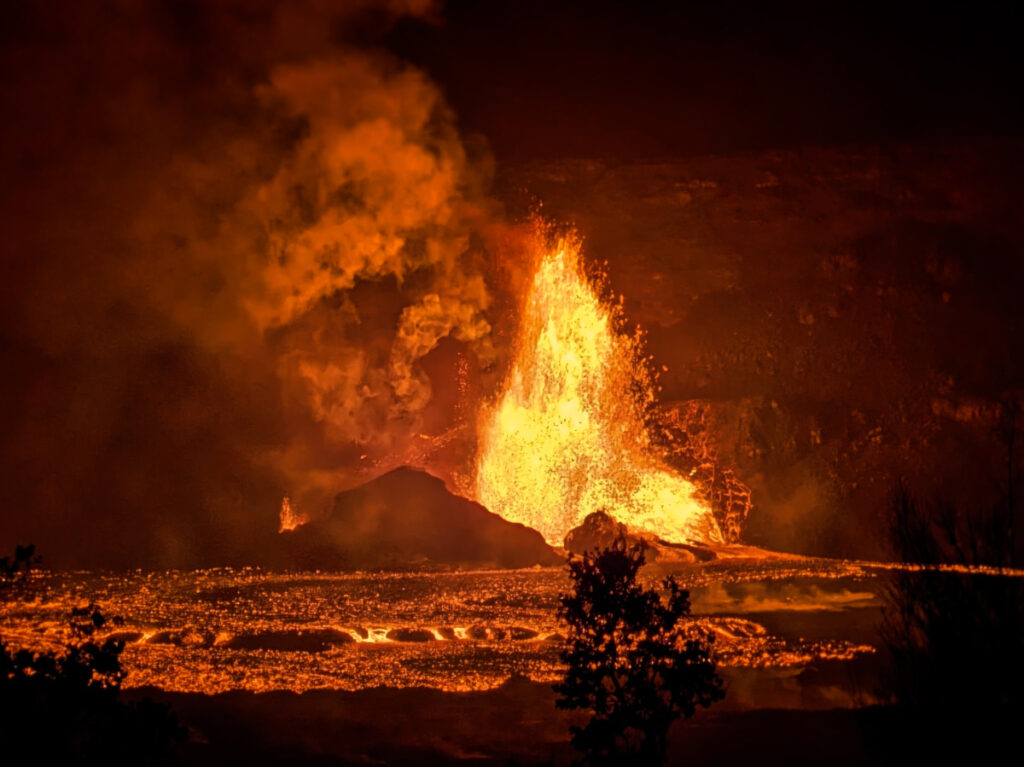
Highlights of the Keanakako’i Overlook at Kilauea
It has to be said that the Keanakako’i Overlook Trail is the BEST experience you can have when Kilauea is erupting. Yes, there are lots of great viewpoints all around the crater rim, but the trek out to the point to be at the closest viewing spot to spewing lava is just unmatched. I’ve done this trail many times, including when there hasn’t been an active eruption and it never disappoints.
If Kilauea is having a small eruption or is just having a bit of a slow spell, hiking out to Keanakako’i Overlook is the best way to be able to see whatever activity there actually is. This is where you can get the nice lava glow photos or really see the detail in the cracked lava lake as it’s cooling. Even if there isn’t an active eruption, this part of Hawaii Volcanoes National Park has the best stargazing due to the elevation, the clearing of trees and the complete panorama at the Keanakako’i Overlook.
When there is a very active eruption, you’ll see potentially hundreds of people hiking to Keanakako’i Overlook to line up side by side and watch the lava fountains absolutely spew, roaring as the earth releases all that pressure. When Tutu Pele is doing her thing, Keanakako’i is the center of the celebration. I can’t stress enough how jawdropping the experience of watching a Kilauea eruption from here is. Amazing.
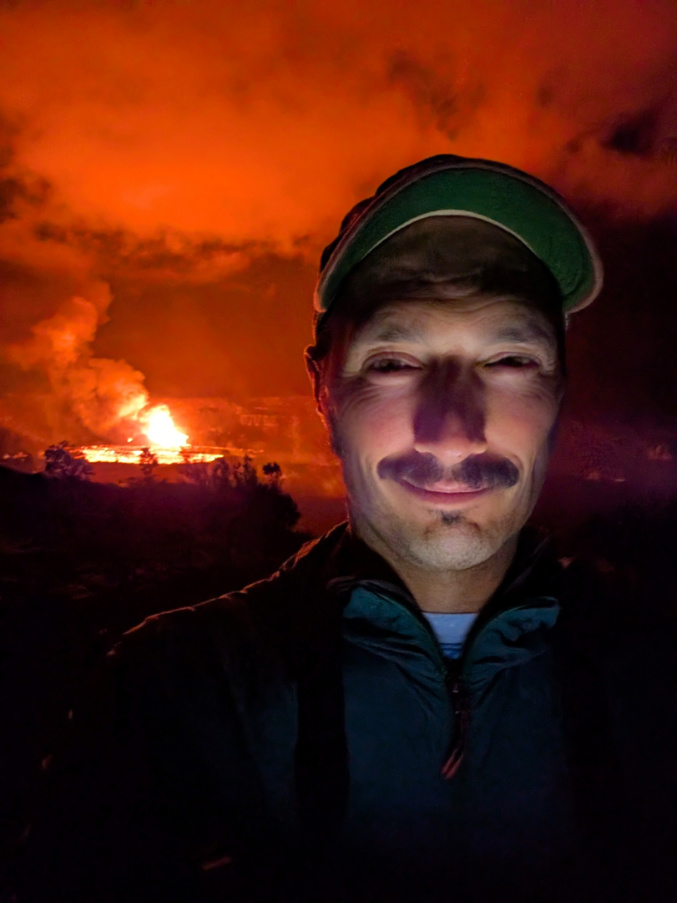
Tips for Hiking Keanakako’i Overlook Trail
The hike to the Keanakako’i Overlook is one mile out from the Devastation parking area. You can park here and hike any time of day (Hawaii Volcanoes National Park is open 24 hours). It’s not a difficult hike in terms of terrain and elevation change, but in the dark it is unusual, for sure. In the daytime you’ll enjoy a simple walk along the old road that used to allow cars to drive out to the Keanakako’i Overlook, and there is a nice forest full of ohia trees and tree ferns. In the daytime you can see the cracks in the pavement and the areas where the road has given way in places.
At night, it’s pitch black and you need to be careful. The Keanakako’i Overlook Trail is plenty safe and there is ample space to walk without getting into the iffy areas, but you must pay attention. In the dark the one mile walk to the point seems rather long, but also it’s pretty magical as you approach and the glow gets stronger. Just be mentally prepared for the darkness and you’ll be fine. If there’s an active eruption you won’t be on the trail alone, so that’s nice, but if that also creeps you out because it’s so dark, be sure that you have a hiking buddy with you. Dress warmly if you’re doing the Keanakako’i Overlook Trail at night.
Yes, you’re on the Big Island of Hawai’i, but you’re also up in elevation in an area that the wind can pick up, so the temperature may drop into the 40s F (single digits C). It’s not as cold as the summit of Haleakala National Park, but it’s chilly. Dress to both combat the wind and to just stay warm in general. I usually have a stocking cap, light pair of gloves, pants, a sweatshirt and a windbreaker jacket. Once you’ve make the hike to the point for watching the lava in Kilauea, you’ll be standing there for a fair amount of time. The warmer you can stay, the longer you can enjoy the display Tutu Pele puts on.
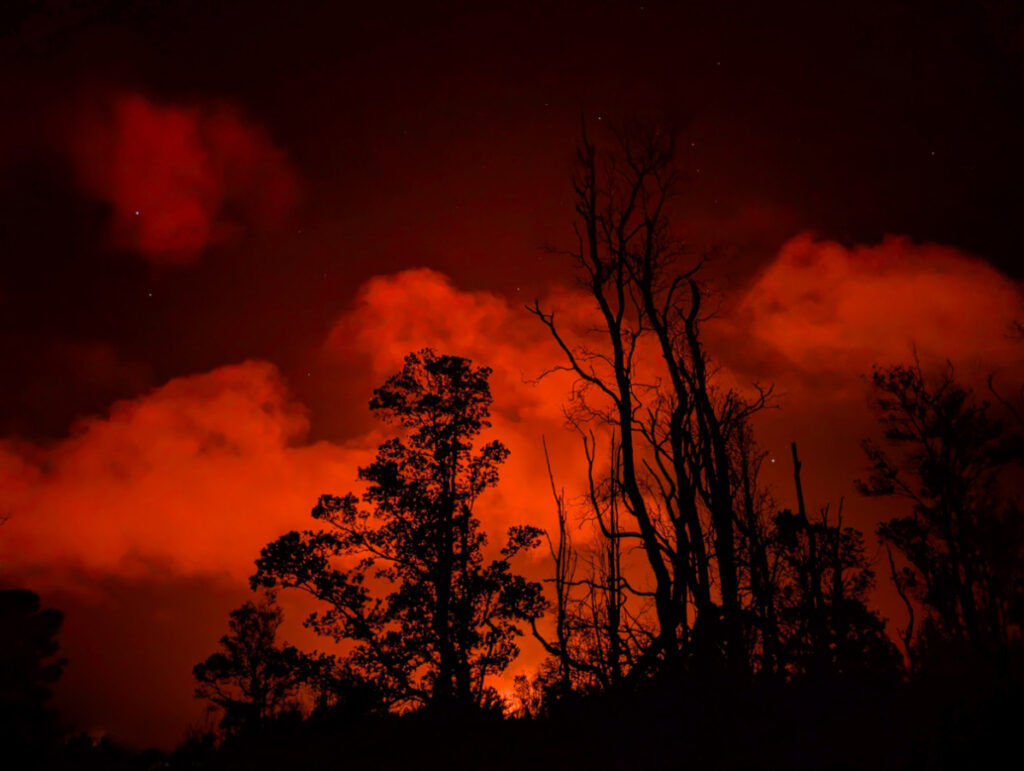
Gear for Kilauea Lava Veiwing at Keanakako’i Overlook
We’ve covered that you’ll need to dress warmly if you’re doing the Keanakako’i Overlook Trail at night to watch the Kilauea eruption. If you’re going in the daytime, I would still suggest dressing warmly in layers, and to bring a windbreaker, so you can enjoy the lava viewing in comfort. If it’s a really sunny day or if you think the rain will move in, don’t forget an umbrella. You can use it for shade just as well as blocking the rain.
Since the Keanakako’i Overlook Trail is 2 miles round-trip, you’ll want to have good walking shoes for the hike. The trial is paved all the way to the spur trail that brings you down to the main viewing point. From there it is a gravel trail but still easy to navigate. This part of the trail is still wheelchair accessible if you are using an all-terrain chair, but each person needs to be the judge of the trail themselves as to if they feel confident in proceeding as there is a small grade down the hill and it is NOT paved.
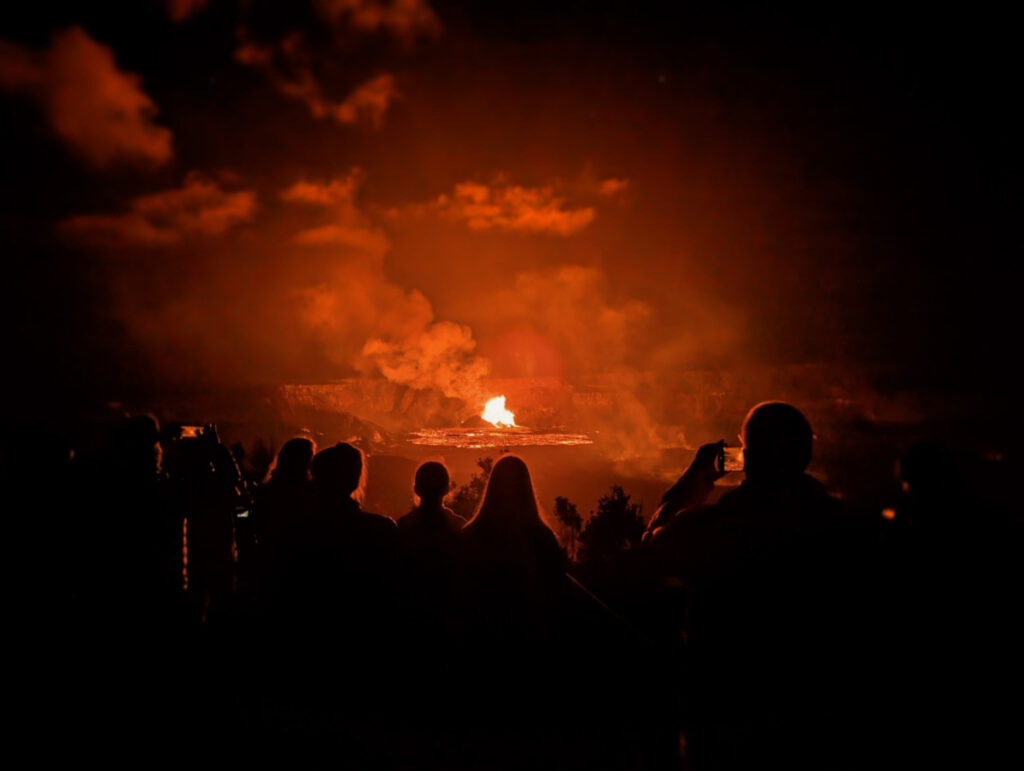
Camera Tips for Lava Photography at Keanakako’i Overlook
During the daytime, photographing lava can be a little tricky because it’s a source of light you might say and the sunshine kind of washes it out, particularly if you’re photographing smaller lava flows or small lava fountains. If there is a large eruption happening, daytime photography with either a camera phone or professional camera shouldn’t be difficult. For nighttime lava photography, either a GOOD camera phone or a camera you understand how to use well is recommended.
For nighttime lava photos with a camera phone, doing a long exposure can create cool images that capture the flow of lava and the warm light reflected on the clouds above, but in general, you’ll get better phone pictures lifting them from video (tap on the lava as the light source and focal point) or doing short exposure images. It depends on how you want the lava to look.
I prefer to take nighttime lava photos with my big camera using a telephoto lens. A 250mm lens is PERFECT for being able to shoot the lava much closer but still capture a bit of the surroundings. I’ve also used my 600mm lens fully extended to get into the individual spurts and falls of the lava. The key to getting good lava photos at Keanakako’i Overlook is to REVIEW YOUR PICTURES as you take them. Different moments will have more light than others and you may need to adjust your approach continually.
Lastly, bring a tripod with you. Whether you’re using your phone or a nice camera, a tripod is going to make or break the photography experience for a lot of people. It is difficult to remail steady either when it’s windy or when you’re holding a heavy camera. And if you’re doing long exposures, you’ll need to be set up on a tripod anyways. At Keanakako’i Overlook there is a fair amount of room at the front line for setting up a tripod, but if you have to wait for a spot, that’s okay. Be patient.
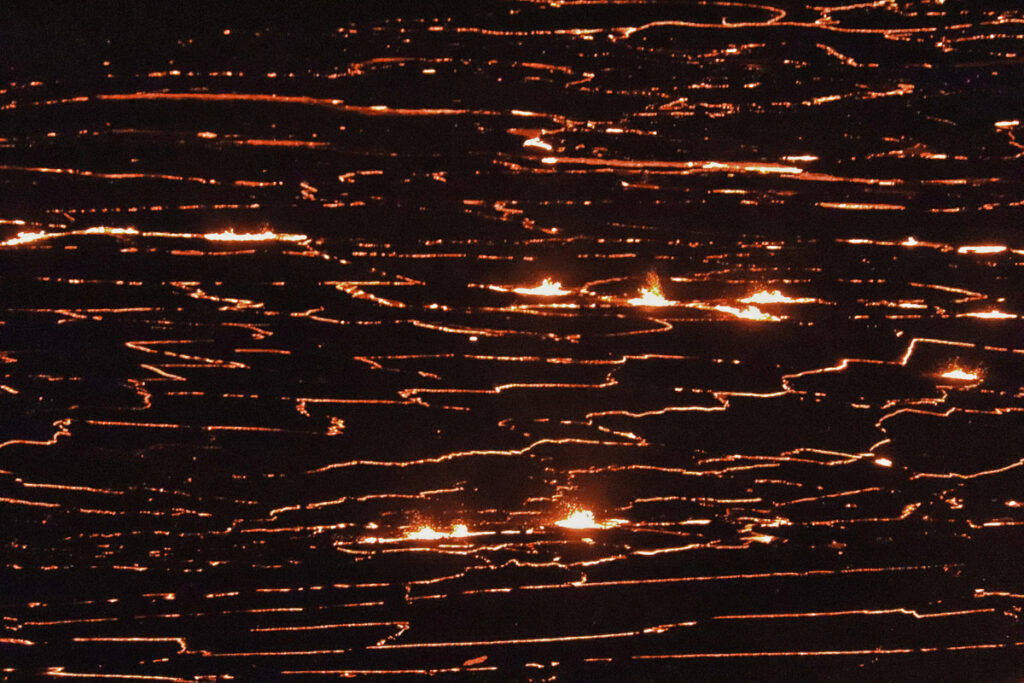
Parking for the Keanakako’i Overlook Trail to Kilauea
The most difficult part of hiking the Keanakako’i Overlook Trail to see Kilauea erupting up close is actually the parking. When the volcano is going off, hundreds of people come to Keanakako’i Overlook at all hours, so getting a parking spot can be frustrating. There is a lot of parking at the Devastation Trailhead parking area, but during peak lava viewing hours (8:00 pm to 11:00 pm) it gets full fast and stays full. There is a bit of parking outside of the lot, but you need to pay attention to signs and park carefully. During big eruption events there may be Park Rangers present to guide parking efforts, but that’s not always the case.
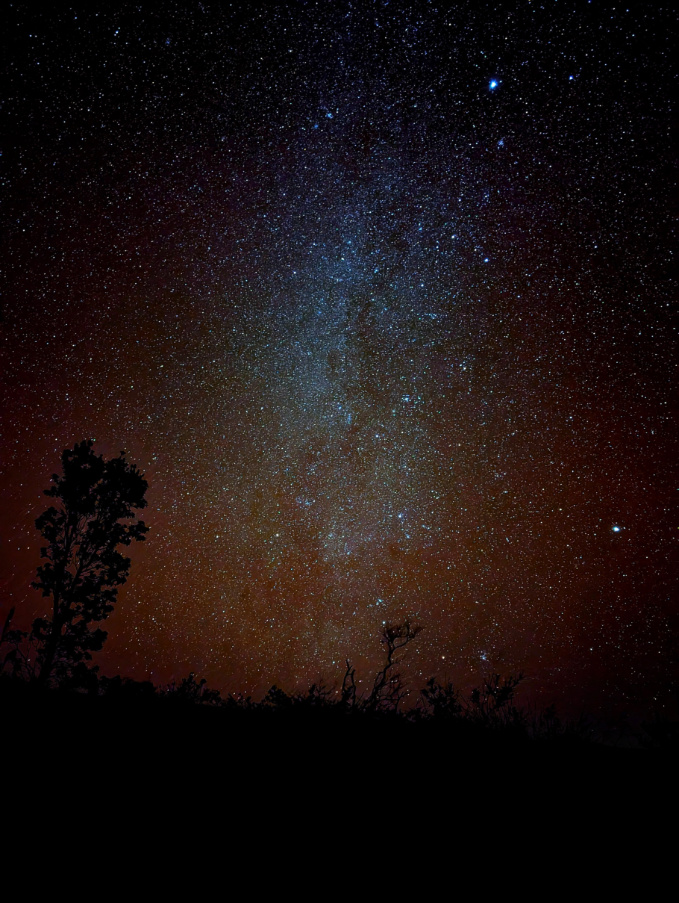
More About Hawaii Volcanoes National Park
Hawaii Volcanoes National Park is my FAVORITE of all the National Parks I’ve been to (including Denali National Park in Alaska) so I have lots to say and share about visiting and how to have the best experiences here. Whether you are just stopping in on your drive between Hilo and Kailua-Kona or you are staying in the park during an epic Kilauea eruption, visiting and enjoying the park can be a part of any trip to the Big Island of Hawai’i.
Have you gotten to really dig into Hawaii Volcanoes National Park or are you just scratching the surface? However you want to plan your visit, there are always things to do, even when there’s not an eruption at the moment. Check out our ideas for enjoying the park and experiencing Tūtū Pele and all her wonders.
I hope you’ll make some time to explore Hawaii Volcanoes National Park and for sure if Kilauea is erupting, that you take the time to do the Keanakako’i Overlook Trail. If you have any other questions about either the National park or visiting the Island of Hawai’i, please leave a comment or send us a note. We’re always happy to share more and help you plan a beautiful Hawaii trip. Aloha!
